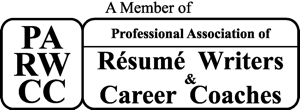iStockphoto.com | fotostok_pdv
A portfolio of work can be an essential job interview tool for graphic designers and other creatives. But even if you're not a creative professional, a well-designed portfolio can be a fantastic way to highlight your skills and achievements.
In case you're not familiar with the concept of a portfolio, it's usually a case, binder, or notebook containing pieces of your work. Think of it as a browse-able brochure of what you have to offer to an employer.
Perhaps you're a marketing professional and you've had an article written about you in the local paper. Or you're an engineer with several high-profile patent applications. Maybe you've written documents that show off your writing skills. Include these!
Your portfolio needs to be polished and professional. Here are some guidelines for you to consider when assembling one.
Make it clean - Your portfolio should consist of your best designed work, arranged neatly and well formatted. Mount the items on the page.
Make your work stand out - Select pieces that best show off your creativity and intellect.
Make it tell a story - Organize your work in such a way that it says something about the progression of what the reader is looking at. Group like with like; if your work has improved as time has progressed, organize your work in such as way that it shows how you've grown.
Make it shine - Pick your best pieces. Get an outside opinion on what is your best work - not everybody may agree with your personal opinions, and it's easy to become attached to your favorites. And if you've worked on recognizable brands, the inclusion of these projects will usually rise to the top.
Make it available online - A digital portfolio is great because you can always pull it up when you're sitting in a hiring manager's office. An online training module you designed can come alive when presented in multimedia.
Scott Singer is the President and Founder of Insider Career Strategies Resume Writing & Career Coaching, a firm dedicated to guiding job seekers and companies through the job search and hiring process. Insider Career Strategies provides resume writing, LinkedIn profile development, and career coaching services, including a free resume review. You can email Scott Singer at scott.singer@insidercs.com, or via the website, www.insidercs.com.






